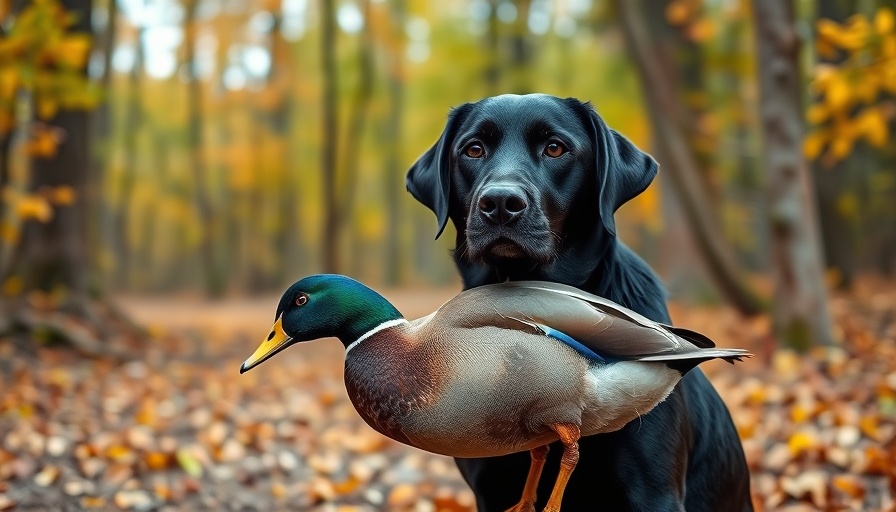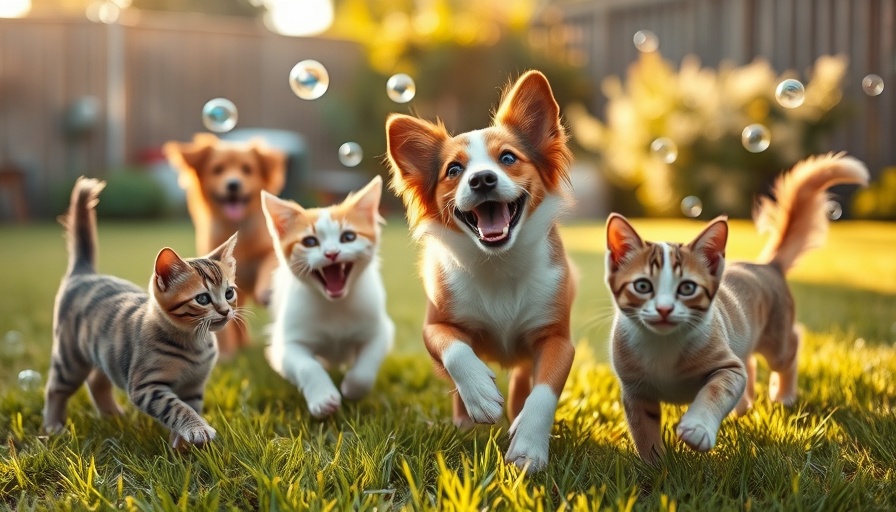
Understanding the Impact of Pet Dogs on Wildlife
As we embrace the barking, wagging tails, and loving eyes of our pet dogs, it’s easy to overlook the potential harm they can cause to wildlife. With over a billion domesticated canines worldwide, these charming companions are not just our buddies; they are serious predators. It may come as a surprise, but our fur babies significantly affect local ecosystems. In the wild, they are the most common large predators, eclipsing the population of pet cats, which number around 220 million. This opens up an important conversation about the ecological responsibilities of dog ownership.
Dogs: The Unintentional Wildlife Predators
Commonly associated with loyalty and companionship, dogs may not seem threatening. However, statistics reveal their darker side—pet dogs account for a remarkable number of wildlife attacks, even disproportionately surpassing felines. For instance, in Tasmania, free-roaming dogs are known to threaten the already vulnerable little penguin population, whose colonies are perilously close to collapse due to predation. The scene is grim in New Zealand, where one uncontained dog was estimated to have killed nearly 500 brown kiwis within weeks, highlighting an alarming pattern of behavior.
The Environmental Cost of Canine Companionship
While dogs bring immense joy to our lives, it’s crucial to understand the broader environmental implications of caring for them. Each dog contributes not only to the potential decline of wildlife through predation but also introduces significant pollution via their waste. Estimates suggest that a single dog produces 200 grams of feces and 400 milliliters of urine daily. Across the United States, this translates to about a million metric tons of fecal waste per year, which can contaminate water and accelerate the deterioration of local flora and fauna.
Dangers Beyond Immediate Predation
Moreover, dog ownership entails using medical products, like flea treatments, which can be highly toxic to aquatic life. When these substances wash off into waterways during walks, they can have devastating consequences. Birds, such as blue tits and great tits, that line their nests with dog fur have shown reduced egg hatch rates due to chemical contamination. All these factors underline an increasingly complex relationship between our beloved pets and the environment.
Simple Steps for Responsible Dog Ownership
So, what can pet owners do to mitigate these unwanted impacts? First and foremost, keeping our pets leashed when outside can significantly curb their hunting instincts and limit wildlife disturbances. Additionally, choosing eco-friendly pet products and responsible waste disposal can greatly reduce our dogs’ environmental footprints. By being aware of our pets' ecological impact and adopting simple protective measures, we can foster a more harmonious coexistence between our furry friends and the natural world.
Conclusion: Compassionate Care Goes Both Ways
Ultimately, owning a pet dog is a joyful and fulfilling experience, but it comes with responsibilities that extend beyond our household. Recognizing and addressing the ecological consequences of our pets can help us make informed decisions and lead to healthier environments for all beings. As responsible pet owners, let’s embrace the notion that compassion for our pets should extend to compassion for wildlife, ensuring sustainable practices that support every creature’s place on this planet.
Let’s take action together. Consider implementing environmentally friendly practices, and when walking your dog, remember the impact leashing can have on local wildlife. By minimizing harm and fostering awareness, you contribute actively to preserving our precious natural resources—something we can all feel good about as we love and care for our canine companions.
 Add Row
Add Row  Add
Add 




Write A Comment